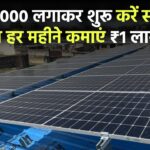
The Tesla Powerwall 3 has officially launched in Sydney, and it’s making big waves in the world of home energy storage. If you’ve been looking for a way to slash your electricity bills and become more energy-independent, this new release might just be the perfect solution. In this article, we dive deep into what the Powerwall 3 brings to the table, why it’s a major step forward, and how it can practically change your home energy game.
Tesla’s previous Powerwall models already revolutionized residential energy storage, but the Powerwall 3 introduces groundbreaking improvements that make it even more appealing for Australian homeowners. From increased power output to a built-in solar inverter, Tesla has packed this model with features aimed at making solar energy storage easier, more efficient, and more reliable than ever before.
Also Check: Solar System Secrets: Install Your Fronius Inverter Like a Pro and Maximize Output!
What Makes Tesla Powerwall 3 Different?
Integrated Solar Inverter
Unlike the Powerwall 2, Powerwall 3 includes a built-in solar inverter. This means it can connect directly to your solar panels without needing an external inverter, simplifying installation and reducing energy loss. Tesla reports the new system achieves around 97.5% efficiency (Source: Tesla).
Bigger and Better Power Output
The Powerwall 3 delivers up to 11.5 kW of continuous power, compared to only 5 kW from the Powerwall 2. This upgrade is crucial, especially if you run multiple large appliances like air conditioners, ovens, or dryers simultaneously. It can handle a “load start capacity” of 185 LRA (Locked Rotor Amps), ensuring heavy equipment starts without a hitch (Source: Southern Energy).
Scalability for Every Household
One Powerwall 3 is great, but if you need more energy storage, you can install up to four units in parallel. That’s a massive combined storage capacity of 54 kWh and supports solar inputs up to 80 kW (Source: Solar Quotes). Whether you’re a small household or a large family, there’s a configuration for you.
Built for Tough Aussie Conditions
Australia’s climate can be brutal, but the Powerwall 3 is ready. It operates efficiently in high humidity, freezing cold, and even minor flooding (up to 0.6 meters). This resilience makes it a smart long-term investment for Sydney homeowners.
Smart Integration with Home Energy Systems
The Powerwall 3 seamlessly integrates with Tesla’s Energy ecosystem, including the Tesla mobile app, solar panels, and the upcoming Tesla Solar Roof. This full integration offers users unparalleled control over how they generate, store, and use energy.
Backup Power Capabilities
In case of blackouts or emergencies, the Powerwall 3 ensures that critical loads in your home, like refrigerators, internet routers, and medical equipment, stay powered up. This feature is especially important for those living in areas prone to grid instability.
Practical Benefits of Powerwall 3
Lower Energy Bills
By storing excess solar energy during the day and using it when rates are high or the sun isn’t shining, you can dramatically cut your electricity costs.
Energy Independence
Forget worrying about blackouts or power outages. The Powerwall 3 can keep essential appliances running smoothly during emergencies.
Environmental Impact
Using more solar energy and reducing reliance on fossil fuels helps lower your carbon footprint and contributes to a healthier planet.
Increased Property Value
Installing a Tesla Powerwall 3 can potentially increase your property’s value, as more buyers are attracted to homes that offer sustainable energy solutions.
Also Check: Do Solar Panels Need Maintenance? You’ll Be Surprised What Most Owners Don’t Know!
Step-By-Step Guide to Installing Powerwall 3
Step 1 – Assess Your Needs
First, determine your household’s energy usage. Analyze past electricity bills to understand your consumption patterns.
Step 2 – Find a Certified Installer
Use Tesla’s certified installer network to find a professional near you. Check reviews and confirm credentials.
Step 3 – Site Inspection and Quote
The installer will inspect your home, recommend setup options, and provide a detailed quote.
Step 4 – Apply for Incentives
Research and apply for any available government rebates or incentives to reduce your upfront costs (Source: Clean Energy Council).
Step 5 – Installation
Installation typically takes 1-2 days. Because Powerwall 3 includes an inverter, setup is faster and simpler than previous models.
Step 6 – Activation and Monitoring
Once installed, you can manage and monitor your system with the Tesla mobile app, which provides real-time data and control.
(FAQs)
1. Is the Tesla Powerwall 3 worth the cost?
While the upfront cost of around AUD $13,600 is significant, the long-term savings on energy bills and the added security during power outages can make it worthwhile. Plus, various state rebates may apply (Source: Energy NSW).
2. Can I use the Powerwall 3 without solar panels?
Yes, but it’s more effective when paired with a solar system. It can store electricity from the grid during off-peak times if necessary.
3. How long does a Powerwall 3 last?
Tesla offers a 10-year warranty, but with proper maintenance, it can last even longer.
4. Are there government incentives for Tesla Powerwall 3?
Yes! In NSW and some other states, rebates and incentive programs are available to help reduce your initial investment.
Also Check: U.S. Slaps Steep Tariffs on Southeast Asian Solar Imports: What This Means for the Solar Industry








